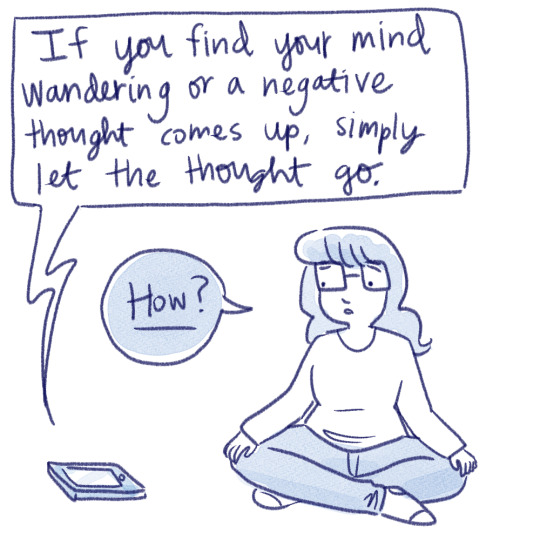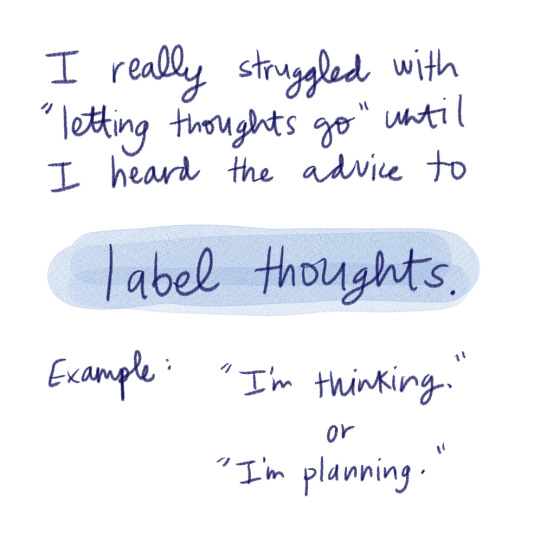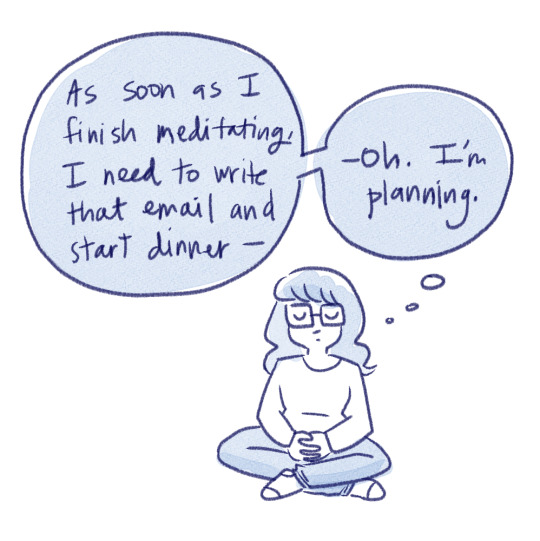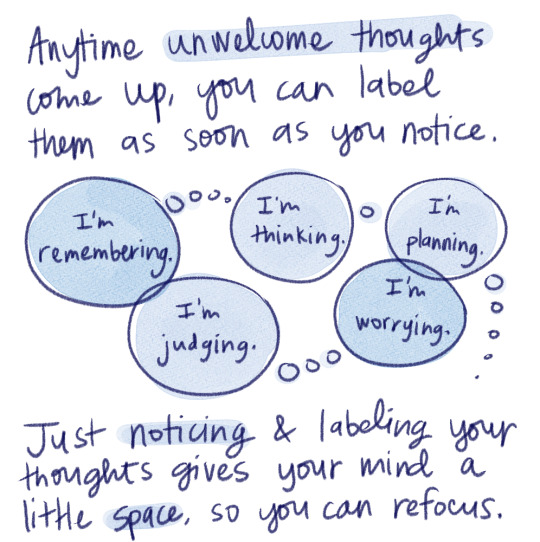Text
How to Have Better Conversations
I’m writing this at the request of my partner. She shared she’s really been struggling with making conversation more than usual lately. I shared some thoughts on how I navigate conversations she found useful and asked if I’d be willing to make a resource or write more about it. This is not meant to be a definitive expert guide, it’s built from my observations and experiences as someone who is autistic and has to navigate a lot of social situations completely manually. This is how I break down the individual components of conversation.
When I spelled this all out, one of her takeaways was that conversations actually involve a lot of microdecisions and that’s why they can be so tiring. And I think that’s totally correct. But I think it’s also why some people can thrive with them because it’s actually a lot of difficult decisions that are tricky to pull off well so when you can and do, there’s a real sense of accomplishment that can make talking more appealing.
I have a feeling this post will be overcomplicated and convoluted to a lot of folks but maybe there’s a handful of folks for whom it is helpful. Take what works, leave the rest. Summary at the end.
Types of Conversation
Topics of conversation are decently important in my experience. They ultimately let you know where the conversation will go - whether it’s likely to end in a dead end, what sorts of things it will allow you to learn about the person you’re discussing with. In my experience, just about all conversation topics fall into one of four camps.
While I talk about Best Use and Don’t Use here - most conversation in the following topics will fall somewhere in-between. They’re just sign posts, not rules.
Me
The focus is on you. Me topics are ultimately about telling a story about yourself with some amount of conscious intent.
Best Use
The best use of this is setting expectations and conveying preferences. This allows your talking about yourself to serve a purpose that ultimately assists the other person in knowing how to understand and interact with you best without necessarily demanding certain treatment front. They might change or not change how they interact with you and this can show how responsive you might expect them to be.
Examples:
“I’m a writer so I don’t work 9-5. If I reply at odd times, that’s probably what’s going on.”
“One of my favorite ways to get to know someone is to grab a hot drink and go for a walk with them.”
Don’t Use
The worst use of this is look a certain way - knowledgeable, impressive, interesting. Basically any use rooted in getting another person to like you. Genuine connection doesn’t start from a place of elevating one person over another. Plus honestly 90% of people just do not care about why you think you’re interesting, important, etc and hate feeling pressured to validate you.
Examples:
“My boss was even stumped by the issue but I figured it out on my own.”
“All my friends say I’m the best at baking.”
“I keep a bunch of tools in my car, I’m ready to fix anything anywhere.”
You
The focus is on the other person. You topics are ultimately about letting the other person share the story of themselves.
Best Use
The best use of You topics is to better understand how a person understands themselves. Open ended questions that invite them to show their thinking as well and shows you how they reason. The common acronym FORD (family, occupation/occupy time, recreation, dreams) is a decent
Example:
“So how did you find yourself in this city? What was that journey like?”
“Why did you take up [your hobby]? What drew you to it?”
Don’t Use
Don’t use you topics to actively try to find fault with someone else. It’s great to have standards and hard no’s for your friendships and relationships. But poking around for them upfront can alienate people who you’d otherwise like - suspicion is not a desirable quality in a friend or potential partner. Ultimately you have to let a person show you who they are and make a personal call. There’s no short cut.
Example:
“So why did you and your ex break up?”
“So you get angry easily then?”
Both
The focus is on a shared expertise/language, not on the story of either of you.
Best Use
The best use of both topics is to notice things about them they wouldn’t think to explicitly share necessarily and to connect in a way that only people with your shared interest or expertise allows.
Example:
My partner and I both have a background in academic medical research. However when we talk about it, it becomes apparent that my focus is on the practical and researcher side and hers is on the data and compliance side. It’s interesting to note where our similar interests compliment and diverge.
Don’t Use
Don’t use both topics to try one up or show you know more than the other person. The minute you do that the shared aspect - and therefore connection - is gone.
Example:
I once went on a date with a man who spent a half hour explaining how GIS systems work in a very “look at me” way after I mentioned I had used them when I was studying forestry in college. It was boring as hell.
Neither
The focus is on a topic without a shared expertise/language, not on the story of either of you.
Best Use
The best use of neither topics is a shared exploration/experience. One person will usually know a little more about a topic than the other person. The person who knows less benefits by learning about a topic they’re curious about. Their questions and observations invite the other to think about this topic in a new light so the experience winds up being somewhat shared.
Examples:
A woman in line at Lowes let me know I could overwinter mums in this area. I proceeded to ask her about how she’d taken such good care of hers and whether the effortwas worth it. She thoughtfully answered my questions and I learned a lot.
I mentioned to my partner a personal project I’m considering undertaking. She asks about my motivations for it and in doing so I have to further clarify them. She learned a little about what my project was about and I learned what I was really after, seeing it fresh.
Don’t Use
Don’t use neither topics to soapbox about things that are of solely personal interest. If someone makes it clear they’re not interested pivot to something more interesting. Even neither topics require at least a little bit of common ground.
Examples:
I regularly talk about group hypocrisies I’m trying to make sense of before realizing that people outside of that group don’t really care.
Ideal Ratio
In general, in reflecting on my own conversations, I think a ratio where more than half the conversation is on either both or neither topics are the most rewarding. It’s where neither party walks away feeling like they talked too much about themselves and when meaningful and interesting topics still have been discussed.
I think it’s a common mistake to try to get the conversation to be 50% you, 50% me. That’s where conversations feel like a job interview and get exhausting real quick. They also have an appearance of depth as people disclose more to keep the conversation going but with out a feeling of connection after because little time is spent on exploration and shared experience.
How to Respond
So knowing what topic you’re currently or want to talk about is one part of this, but the other is choosing a response. I generally let the other person’s response dictate some measure of my response.
Pivot
If someone seems negatively engaged - leaning back, looking around a lot, arms crossed, giving short answers - I pivot to a neutral topic. I find neutral topics work best because the focus is not on either of you - they don’t feel like they’re under pressure to disclose or act interested in you. Neutral topics also allow them to lead the pace - asking questions and making observations at the level they feel comfortable. If they continually seem negatively engaged, it’s usually best to bail from the conversation, especially if asking questions about the dynamic itself seems like it might not be welcome.
Matching
If someone seems neutrally engaged - mostly looking in your direction, not leaning toward or away, giving input on what you’re saying - I match and continue with the topic.
FOOL
Being a little like the Fool in the Major Arcana is actually a great way to be a good conversationalist - genuine, curious, brave, and receptive. Bellow are some concrete ways how.
Follow up questions - Good follow up questions come from a genuine place of curiousity. They also tend to either fill in gaps in your own understanding or encourage the speaker expand the discussion into a new but related area.
Observation - Observations on the topic itself are great but not your only option. You can oberve how a person seemed to feel when talking about the topic. You can observe that they’d touched on a related topic before. Comparison is a fruitful ground for observations as well - “That’s similar to…” and ”That’s very different than….”
Opinion - Offering an opinion or requesting their opinion is a good way to keep a conversation going. In general, it’s best to avoid generalizations, soften them a little to start with, and make sure there is some measure of compassion in the opinion you’re sharing. Rigidity leaves little room for discussion and exploration.
Levity - Where appropriate, make a joke, share a meme, craft a pun, tease them a little. Laughter is a shared experience that connects us.
Building
If someone seems positively engaged - leaning forward, making eye contact, coming closer to you for neurotypical people and actively engaging with the content of what you’re saying regardless of stims or eye contact for neurodivergent folks - I build on what we’re talking about. I self disclose my feelings and personal connections to the topic one step further than what the person I’m talking with has.
It’s important not to disclose a lot more than the person you’re talking with has. It leads to a vulnerability hangover for you and can be quite awkward and uncomfortable for them. If you disclose just a little more than the person you’re chatting with, then it’s much more easy to recover and match their level if they seem uncomfortable with what you shared.
Decision Tree
“What topic are we talking about currently?”
Me - Set expectations, share preferences; you focused
You - Understand you as you understand yourself; other person focused
Both - Connect over a shared language; idea focused
Neither - Connect over a shared exploration; idea focused
“What cues am I getting from the other person?”
If positive, build on current topic - be vulnerable
If neutral, match on current topic - be a FOOL*
If negative, pivot to a different topic - preferably neutral or in ratio**
*FOOL
Follow up questions - genuine curiousity - “I wonder…”
Observe - conversation, feelings, topic - “I noticed…”
Opinion - cautious, concise, compassionate - “I’ve often thought…”
Levity - make jokes, share memes - laughter connects
**Ratio
51% Both/Neither
<49% Me/You
298 notes
·
View notes
Text
When I was little my mom’s meatloaf was my favorite food. But ONLY her meatloaf. I didn’t like anyone else’s, and she told me that she would teach me how to make it when I was older. And when I was like 19? She finally taught me, but she told me never to tell anyone else and I was like weird but okay
Anyway, she was super fucking homophobic and abusive to me when I told her I was gay, so here’s the recipe
4-6 lbs of Hamburger/turkey burger
1 pk onion soup mix OR ranch mix
1 TBs ketchup
1 Tbs spicy brown mustard,
1 Tbs bbq sauce
1 Tbs steak sauce
1 egg
mix, shape into a loaf in a big pan, and bake at 350 for 2 hrs (maybe 2 and a half if you’re feeling dangerous)
You can get almost all of these ingredients at the dollar store, and have leftovers if it’s just you. The leftovers make great tacos if (taco seasoning is also like a dollar). Enjoy your revenge loaf
305K notes
·
View notes
Text
Smutty One-Liners Part VI
"Feel this? It's just for you."
"Let's ruin ourselves for anyone else."
"I want to taste you so badly."
"Make me beg for it."
"Oh I can do this all night long."
"You surprise me every day."
"Let's find out how much you want it."
"Kiss me, I can't wait any longer."
"Come on, please, do it."
"Oh, you like that?"
"Hmm, you're not very patient, are you?"
"Well, let's see what happens tonight."
"Can you kiss it better?"
"Oh, you're hard to please."
"I had a very nice dream that started like this."
"You are so amazing, please never stop."
"Can you be good for me?"
"It's so hot when you talk like that."
"Stop teasing me and do it!"
"You're still holding back, just let go."
Part I | Part II | Part III | Part IV | Part V
If you like my blog and want to support me, you can buy me a coffee or become a member! And check out my Instagram! 🥰
7K notes
·
View notes
Text
70 or 100, it’s all part of the journey and we’re along for the ride.
265 notes
·
View notes
Text
Fantasy Guide to Building A Culture

Culture is defined by a collection of morals, ethics, traditions, customs and behaviours shared by a group of people.
Hierarchy and Social Structures

Within every culture, there is a hierarchy. Hierarchies are an important part of any culture, usually do ingrained that one within the culture wouldn't even question it. Hierarchy can be established either by age, gender or wealth and could even determine roles within their society. Sometimes hierarchy can may be oppressive and rigid whilst other times, ranks can intermingle without trouble. You should consider how these different ranks interact with one another and whether there are any special gestures or acts of deference one must pay to those higher than them. For example, the Khasi people of Meghalaya (Northern India), are strictly matriarchal. Women run the households, inheritance runs through the female line, and the men of the culture typically defer to their mothers and wives. Here are a few questions to consider:
How is a leader determined within the culture as a whole and the family unit?
Is the culture matriarchal? Patriarchal? Or does gender even matter?
How would one recognise the different ranks?
How would one act around somebody higher ranking? How would somebody he expected to act around somebody lower ranking?
Can one move socially? If not, why? If so, how?
Traditions and Customs

Traditions are a staple in any culture. These can be gestures or living life a certain way or to the way a certain person should look. Traditions are a personal detail to culture, they are what make it important. Tradition can dictate how one should keep their home, run their family, take care of their appearance, act in public and even determine relationship. Tradition can also be a double edged sword. Traditions can also be restrictive and allow a culture to push away a former member if they do not adhere to them, eg Traditional expectations of chastity led to thousands of Irish women being imprisoned at the Magdelene Laundries. Customs could be anything from how one treats another, to how they greet someone.
How important is tradition?
What are some rituals your culture undertakes?
What are some traditional values in your world? Does it effect daily life?
Are there any traditions that determine one's status?
Values and Opinions

Values and Opinions are the bread and butter of any culture. This is the way your culture sees the world and how they approach different life hurdles. These may differ with other cultures and be considered odd to outsiders, what one culture may value another may not and what opinion another holds, one may not. There will be historical and traditional reasons to why these values and opinions are held. Cultures usually have a paragon to which they hold their members to, a list of characteristics that they expect one to if not adhere to then aspire to. The Yoruba people value honesty, hard work, courage and integrity. Here are some questions to consider?
How important are these ethics and core values? Could somebody be ostracised for not living up to them?
What are some morals that clash with other cultures?
What does your culture precieved to be right? Or wrong?
What are some opinions that are considered to be taboo in your culture? Why?
Dress Code

For many cultures, the way somebody dresses can be important. History and ethics can effect how one is meant to be dressed such as an expectation of chastity, can impose strict modesty. While other cultures, put more importance on details, the different sorts of clothes worn and when or what colour one might wear. The Palestinian people (من النهر إلى البحر ، قد يكونون أحرارا) denoted different family ties, marriage status and wealth by the embroidery and detailing on their thoub.
Are there traditional clothes for your world? Are they something somebody wears on a daily basis or just on occasion?
Are there any rules around what people can wear?
What would be considered formal dress? Casual dress?
What would happen if somebody wore the wrong clothes to an event?
Language

Language can also be ingrained as part of a Culture. It can be a specific way one speaks or a an entirely different language. For example, in the Southern States of America, one can engage in a sort of double talk, saying something that sounds sweet whilst delivering something pointed. Bless their heart. I have a post on creating your own language here.
Arts, Music and Craft

Many cultures are known for different styles of dance, their artwork and crafts. Art is a great part of culture, a way for people to express themselves and their culture in art form. Dance can be an integral part of culture, such as céilí dance in Ireland or the Polka in the Czech Republic. Handicrafts could also be important in culture, such as knitting in Scottish culture and Hebron glass in Palestine. Music is also close to culture, from traditional kinds of singing such as the White Voice in Ukraine and the playing of certain instruments such as the mvet.
Food and Diet

The way a culture prepares or intakes or treats certain foods are important to a culture. In some cultures, there is a diet yo adhere to, certain foods are completely banned. With Jewish culture, pork is prohibited along with fish such as sturgeon, along with shellfish and certain fowl. Meat must also be prepared in a certain way and animal byproducts such as dairy, must never be created or even eaten around this meat. This is known as kosher. The way one consumes food is also important to culture. In some cultures, only certain people may eat together. Some cultures place important on how food is eaten. In Nigerian culture, the oldest guests are served first usually the men before the women. In Japanese culture, one must say 'itadakimasu' (I recieve) before eating. Culture may also include fasting, periods of time one doesn't intake food for a specific reason.
What are some traditional dishes in your world?
What would be a basic diet for the common man?
What's considered a delicacy?
Is there a societal difference in diet? What are the factors that effect diet between classes?
Is there any influence from other cuisines? If not, why not? If so, to what extent?
What would a typical breakfast contain?
What meals are served during the day?
What's considered a comfort food or drink?
Are there any restrictions on who can eat what or when?
Are there any banned foods?
What stance does your world take on alcohol? Is it legal? Can anybody consume it?
Are there any dining customs? Are traditions?
Is there a difference in formal meals or casual meals? If so, what's involved?
Are there any gestures or actions unacceptable at the dinner table?
How are guests treated at meals? If they are given deference, how so?
9K notes
·
View notes
Text
Hurt/Comfort Dialogue Prompts
Part III
"We will get through this. Together."
"You can hold my hand, if it makes you feel safer."
"It will become easier. Maybe not today, but soon."
"Lay your head on my shoulder and try to sleep."
"There is nothing wrong with needing a bit of help."
"I'm here for you. Today, tomorrow and every day after."
"Please trust me to help you."
"Thank you for getting me through this."
"I'm really hoping to see you smile again soon."
"Nothing a good night's sleep can't fix."
"Show me that bruise please."
"I'm taking care of you now."
"Do you feel safe enough to come with me?"
"Let's dry those tears and get you some water."
"I'm going to be here when you wake up."
"This will all soon be in the past."
"Can I please hold your hand?"
"Sorry, I'm being so difficult for you."
"Don't apologize for needing help every now and then."
"Let's get you in the shower and we'll take it from there."
If you like my blog and want to support me, you can buy me a coffee or become a member! And check out my Instagram! 🥰
3K notes
·
View notes
Photo

Saint Hilarion Castle, Cyprus (by hopetorture)
3K notes
·
View notes
Photo









Black Magic M-66 (OVA)
Tumblr Community Guidelines
☑ Don’t upload GIFs that show female-presenting nipples
nipples are not visible
☑ Certain types of artistic content featuring nudity are fine
anime is high art
20K notes
·
View notes
Text




Self-care Sunday: Does anyone else feel like they need more concrete instructions than "just let go" of intrusive thoughts?
Hunter Clark-Fields (author of Raising Good Humans) explains that the reason labeling thoughts works to help let them go is because the process activates the prefrontal cortex---the part of the brain responsible for logic, reason, and decision-making, i.e. the part of the brain that's good at focusing and setting emotions aside. It's been really helpful in my meditation practice to notice where my thoughts go, give them a label, and find it easier to refocus on the present.
Labeling thoughts isn't just helpful during meditation! It's a useful practice at any time of day when you notice unwanted thoughts cropping up. The key is in the noticing.
22K notes
·
View notes
Text
LIFE ADVICE FOR YOUR TEENS AND EARLY TWENTIES (and probably beyond but I haven't made it much farther than that so far):
GO OUT BY YOURSELF
LEARN HOW TO NAVIGATE PUBLIC TRANSIT WITH NO SMART PHONE
TAKE ONLINE CLASSES
MAKE PEACE WITH DISAPPOINTING YOUR PARENTS
GO TO THERAPY IF POSSIBLE
FOLLOW AFTERCARE INSTRUCTIONS FOR NEW TATTOOS AND PIERCINGS
EAT A MEAL BEFORE DRINKING
DON'T MIX DRUGS
IT'S HARD TO BE YOURSELF WHEN YOU DON'T KNOW YOURSELF SO JUST KEEP TRYING NEW THINGS
THROW EVERYTHING AT THE WALL LIKE SPAGHETTI TO SEE WHAT STICKS
YOU WILL DISCOVER YOURSELF THE SAME WAY YOU DISCOVER NEW COFFEE SHOPS AND NEW BANDS
YOU WILL GET THERE
DON'T MAKE A LONG POST IN ALL CAPS BECAUSE YOUR VOICE WILL START TO HURT FROM SHOUTING
70K notes
·
View notes
















